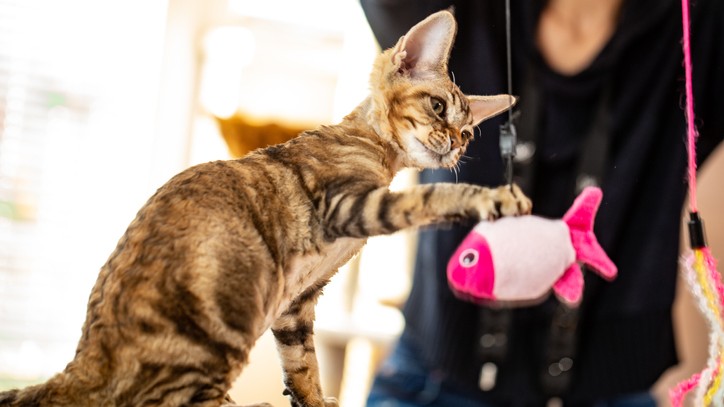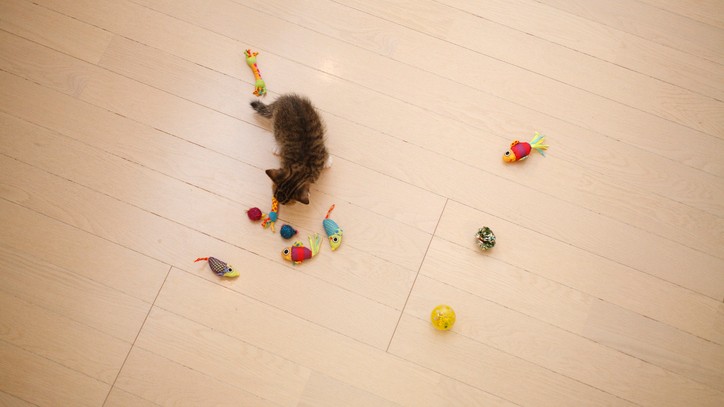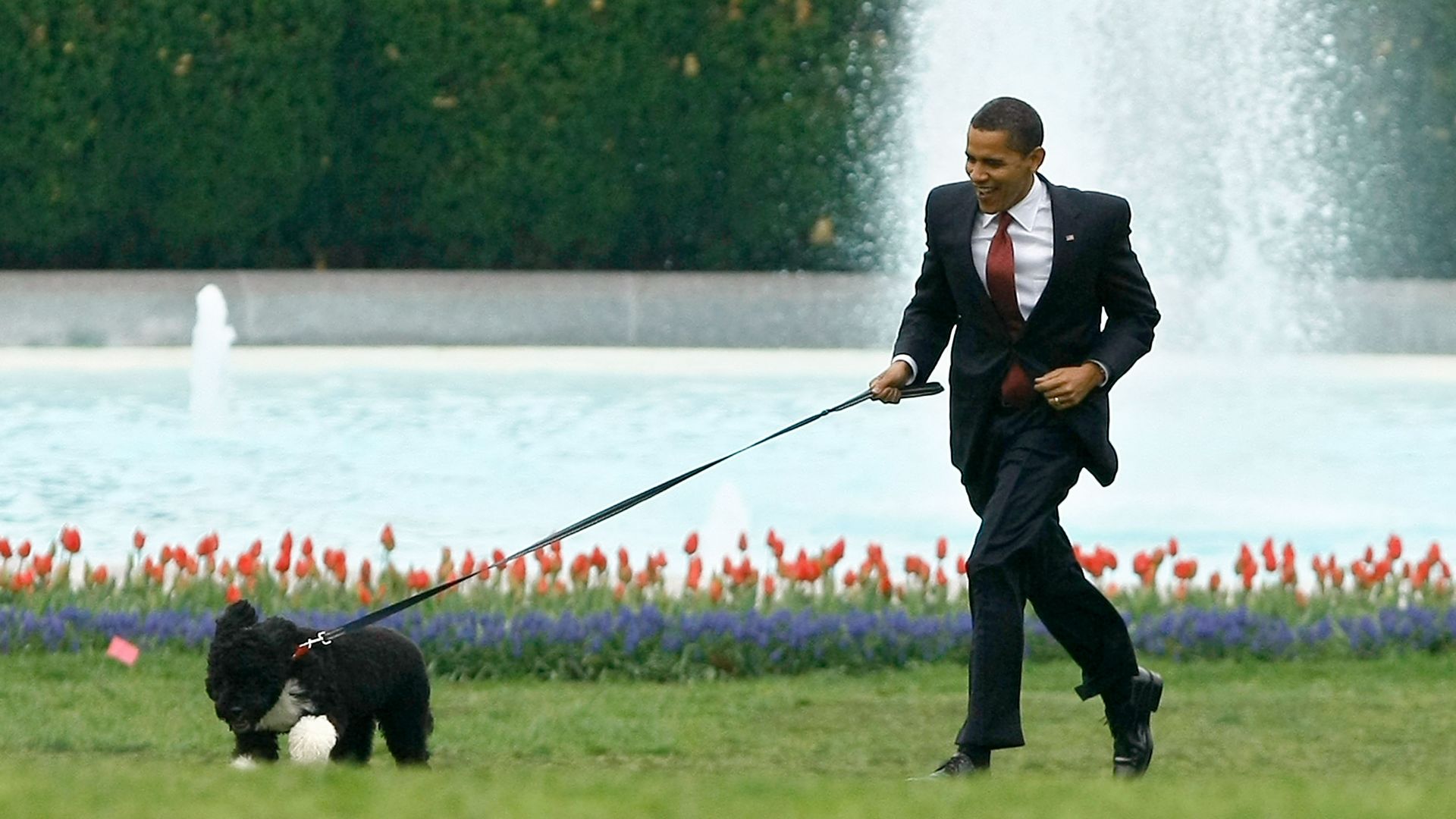How to clean cat toys: A guide to keeping your feline friend's toys fresh
Learn when, why and how to clean cat toys to keep your pets and home safe

Knowing how to clean cat toys may not be as obvious as it sounds. In fact, many people simply don’t do it. While we routinely clean bowls, beds, and animals themselves, even the best cat toys can often get overlooked. Which isn't great as they can be potential breeding grounds for germs and all kinds of nasties that could cause real harm to both you and your pet.
Knowing how often to clean cat toys, as well as the different treatments that different kinds of toys require takes a little bit of thought – which is where this handy guide comes in.
Making sure your cat toys are kept clean can also prolong their life before you need to throw them away – which saves you money, as well as reducing your environmental impact. There will always come a time when throwing away is the safest thing to do however, so we also cover that in our advice below.
Keep reading to find out more.
- Is your cat bored? 10 tips to entertain your moggy
- How to play with a cat: A vet’s advice on keeping your cat active
- Six reasons you should play with your cat right now
How often should I clean my cat toys?
There’s not a one-size fits all answer to this question, since it depends on a number of variables. Don’t worry, you don’t need to clean them on a daily basis, but it’s a good idea to keep a check on your feline friend’s toys – especially their favourites.
For fabric and catnip toys, you probably want to keep washing relatively light and on a “need to” basis, since high temperatures and very frequent washing can damage them. For toys made from a sturdier material – such as plastic – a more regular cleaning regime can be put in place since it’s much easier – roughly once a week is a good starting point if you can.
How to clean fabric cat toys
You’ll need to take extra care of fabric toys, since frequent washing can cause stitching to loosen, colours to fade and stuffing to lose its shape. Some fabric toys can withstand washing in a machine, but it’s best to check the manufacturer’s information – usually found on the label, or the packaging when you first buy the toy.
If the toy is unbroken / undamaged, it will probably be safe on a hot wash, so if you want to make sure any germs are removed, then a 40-60 degree wash is recommended. It’s a good idea to put toys like this in with other items – such as towels – so that they’re not rattling around on their own.
If there’s any loose stitching, or you’re worried about damage, soak fabric toys in the sink with some detergent (dish soap is ideal) before scrubbing away any obvious stains with a sponge, dishcloth or even an old/disused toothbrush.
Afterwards, it’s important to thoroughly rinse any soap off the toys, and put them somewhere out of your moggy’s way to completely dry. It’s best to avoid tumble drying if you can, instead placing them on/near a radiator or in an airing cupboard is good.
How to clean plastic cat toys
On the whole, plastic or rubber cat toys are simpler to clean. You won’t want to put these in your washing machine, but you could consider placing them in your dishwasher – hot water will do a good job of sanitizing your toys, but avoid high drying temperatures which could melt or warp your plastic toys.
You can also use a simple anti-bacterial spray, sprayed onto a cloth before wiping down your cats favourite toys. After you’ve done this, it’s best to rinse off toys with clean water to make sure no chemical residues are left behind. Dry the toy completely with a towel or in a drying rack before giving it back to your pet.

How to clean catnip toys
Any toys that your cat has with catnip inside them need to be treated slightly differently. They’re likely to be made from fabric, but for obvious reasons they’re likely to be chewed on far more than other types of toys. Spot cleaning with a cloth, or soaking in clean water (without detergent), is the best idea for this kind of toy.
If the toy is the kind that lets you refill it with catnip, you can also take out any catnip holder first, clean the toy thoroughly, then refill it with catnip when you’re ready. Either way, you should avoid using any kind of detergent or chemicals with these kinds of toys, since you don’t want your cat to ingest it.
How to clean a cat scratching post
Aside from cleaning your kitty's toys, there are also other well-used items that are worth freshening up from time to time. With that in mind, here's how we would recommend cleaning one of the best cat scratching posts or towers:
1) Using a stiff brush, loosen and remove any dirt and/or cat hair on it, using short, heavy strokes.
2) Vacuum the post using one of the long attachments to go over every inch of it. One with a brush on the end is probably most ideal.
3) If there are still cat hairs on it, try using a fabric softener. Alternatively, a damp washcloth or lint roller can be used to pick them up. Once this has been done, try vacuuming it again to remove any newly loosened hair.
4) If a cat has been sick or been to the toilet on it, spray on some cat-friendly disinfectant, leave on for a bit, then wipe off with a damp cloth.
5) In more extreme cases of the cat tower getting messy, a carpet cleaner could be used. Used in conjunction with a steam cleaner, this could be particularly effective.
How to know when to throw away cat toys
There’s only so much that cleaning can do for your cat toys. There will also likely come a point when you simply need to dispose of older and severely damaged toys to protect your cat’s health.
Any toy which is made from fabric, fur, feathers and so on which now has loose parts, stuffing hanging out, errant fibres etc could be a potential choking hazard. If you can’t repair the toy, it’s best to throw it away. It’s also harder to clean damaged toys like this, so once it’s passed it’s best, it’s time to get rid.
For toys made of plastic or hard materials, again, keep a careful eye out for any small/dislodged parts which could be accidentally swallowed by your cat. If the toy is excessively scratched, this can also be problematic for germs – so throw it away should you see lots of deep grooves and scratches.
Spick and span
Now that you’ve learned about how to clean cat toys you can make sure your feline friend is kept safe when enjoying their playtime. You can also make your toys last longer and keep your home smelling fresh and clean. If you need to buy some new cat toys, check out our guide to the best cat toys you can buy right now.
PetsRadar Newsletter
Get the best advice, tips and top tech for your beloved Pets
Amy Davies is a freelance writer and photographer with over 15 years experience. She has a degree in journalism from Cardiff University and has written about a huge variety of topics over the years. These days she mostly specialises in technology and pets, writing across a number of different titles including TechRadar, Stuff, Expert Reviews, T3, Digital Camera World, and of course PetsRadar. She lives in Cardiff with her dog, Lola, a rescue miniature dachshund.

